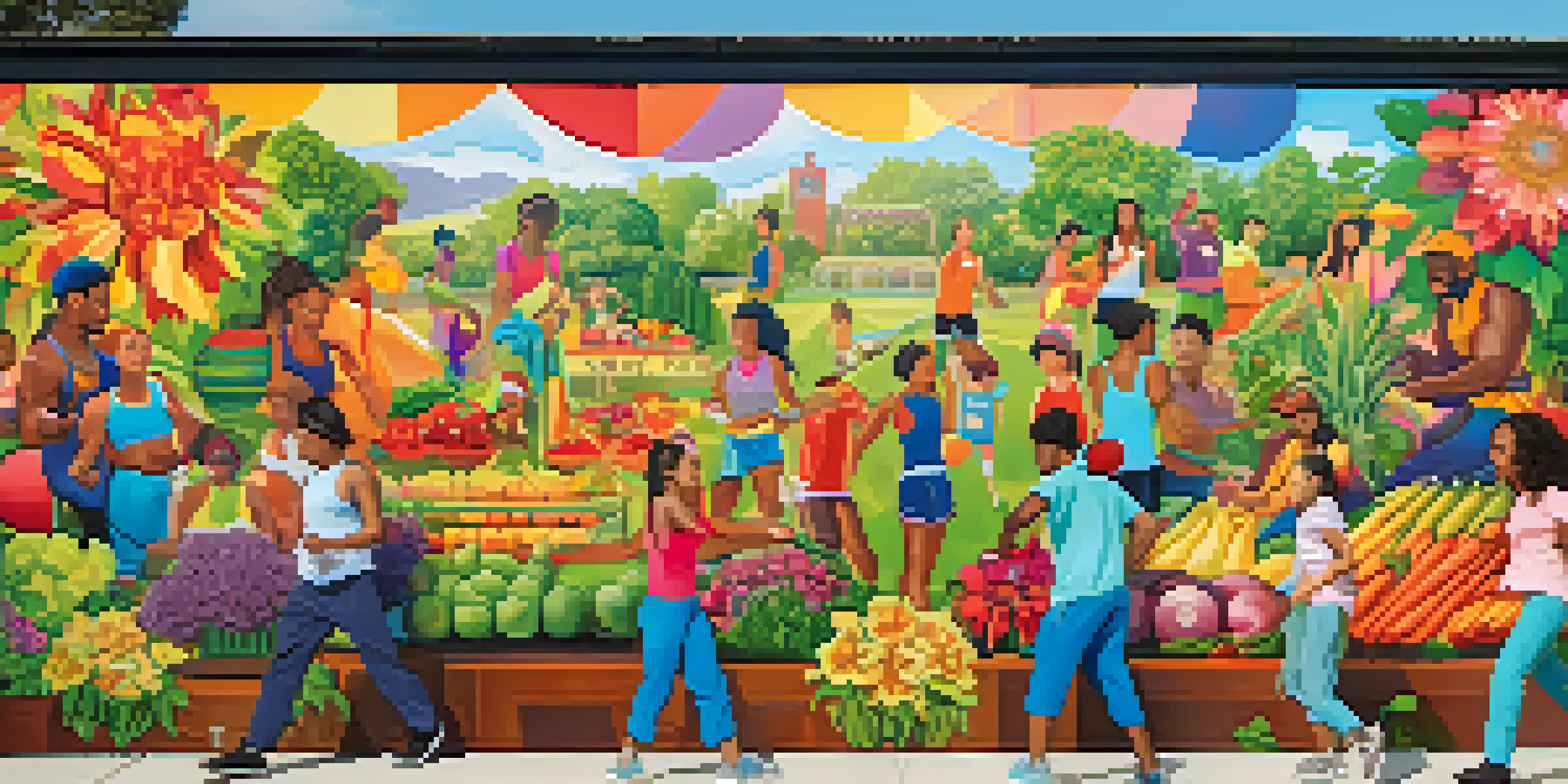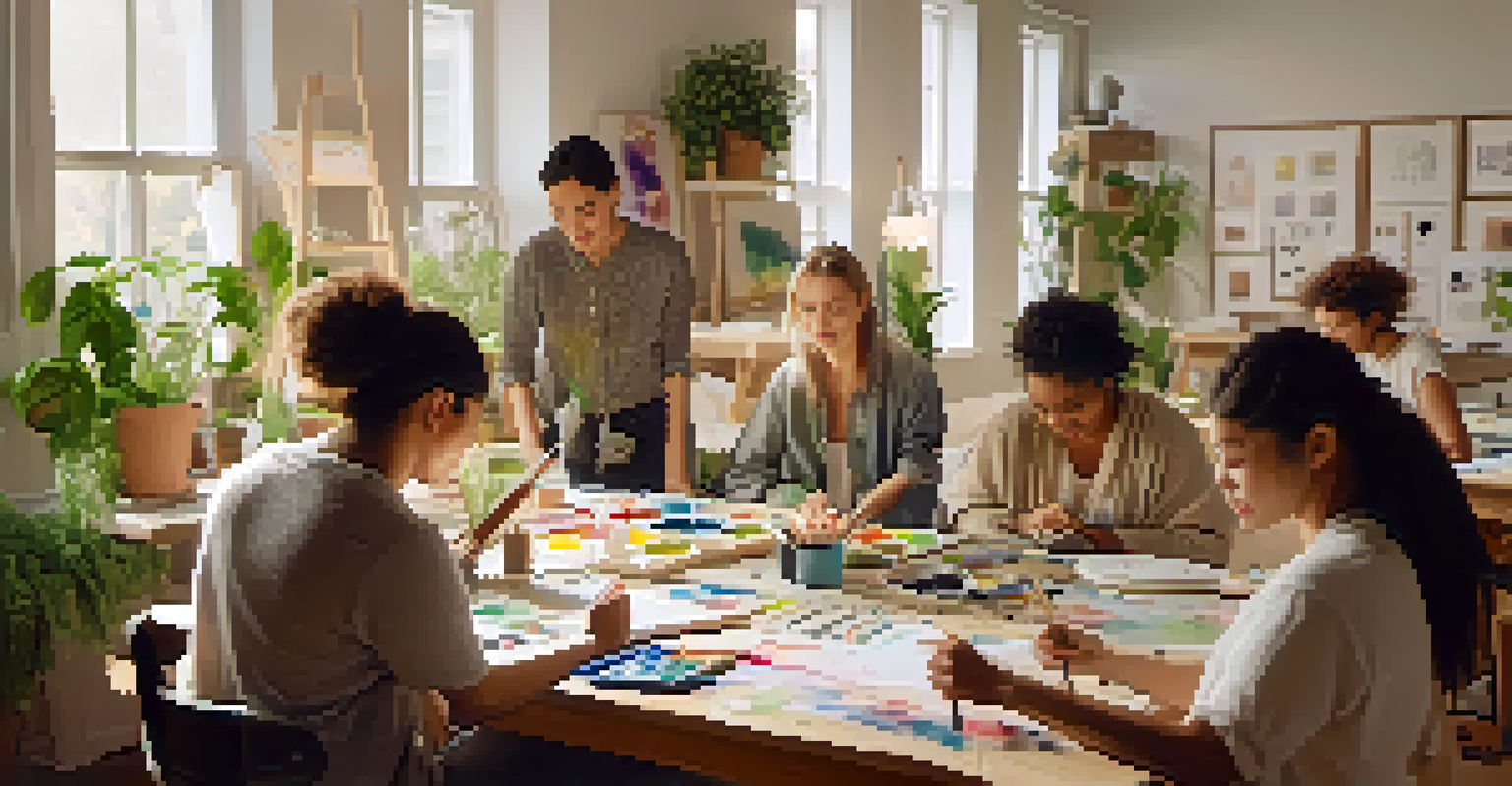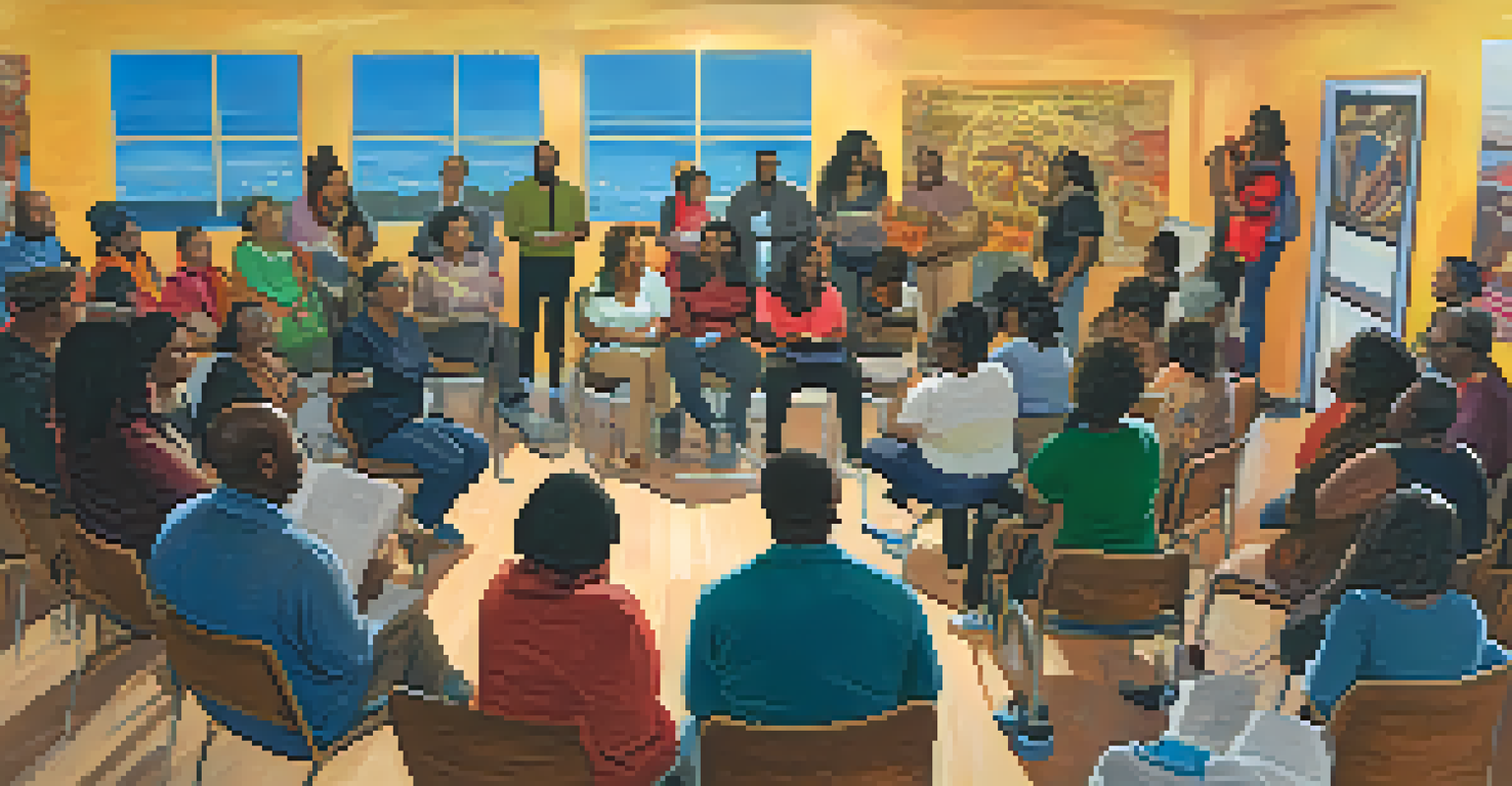The Role of Arts in Promoting Health Equity

Understanding Health Equity and Its Importance
Health equity refers to the fair opportunity for all individuals to achieve their highest level of health. It emphasizes the need to eliminate disparities caused by social, economic, and environmental factors. Ensuring health equity means addressing these underlying issues, which can significantly improve community well-being.
Health equity means that everyone has a fair and just opportunity to be as healthy as possible.
For instance, marginalized communities often face barriers to accessing quality healthcare, leading to poorer health outcomes. By recognizing these challenges, we can work towards creating solutions that promote equal opportunities for health. This is where the arts can play an essential role in raising awareness and inspiring action.
Through creative expressions such as music, theater, and visual arts, we can engage diverse audiences and highlight the importance of health equity. The arts can serve as a powerful medium to communicate complex health issues in relatable ways, fostering understanding and empathy.
The Arts as a Tool for Community Engagement
Arts initiatives can bring communities together, fostering collaboration and dialogue on health equity issues. When people participate in artistic projects, they often feel more connected to one another and invested in their collective well-being. This sense of community can empower individuals to advocate for their health needs.

For example, community mural projects can illustrate local health concerns and celebrate cultural identities. Such artistic endeavors not only beautify the environment but also spark conversations about health issues impacting that community. This engagement can lead to increased awareness and action toward achieving health equity.
Health Equity Benefits Everyone
Achieving health equity requires addressing social disparities to ensure all individuals have the opportunity for optimal health.
Moreover, participatory arts projects can encourage individuals to share their stories, creating a platform for voices that are often unheard. By amplifying these narratives, we can promote a deeper understanding of health disparities and mobilize community members to take action.
Artistic Expression and Mental Health Awareness
Art has long been recognized for its therapeutic benefits, particularly in promoting mental health. Creative outlets can help individuals express their feelings, process experiences, and cope with stress. This is especially critical in communities facing significant health inequities, where mental health resources may be limited.
Art is the most beautiful of all lies; it is a lie that tells the truth.
For instance, art therapy programs can provide safe spaces for individuals to explore their emotions and share their experiences. These programs not only support individual healing but also contribute to community resilience. By addressing mental health through the arts, we can foster a more holistic approach to health equity.
Additionally, public art installations or performances focused on mental health can raise awareness and reduce stigma. By inviting conversations about mental health, the arts can help communities understand the significance of mental well-being in achieving overall health equity.
Storytelling as a Means of Advocacy
Storytelling is a fundamental aspect of the arts that can drive social change. Through narratives, individuals can highlight their experiences with health disparities, connecting with others on a human level. This emotional resonance can be a powerful catalyst for advocacy and policy change.
Consider a documentary film that shares the stories of individuals from a low-income neighborhood struggling to access healthcare. By bringing these stories to light, the film can educate a broader audience and inspire action from policymakers. This illustrates how storytelling can bridge the gap between art and health equity advocacy.
Arts Engage Communities on Health
Creative expressions through the arts can foster community engagement and raise awareness about health equity issues.
Furthermore, storytelling can empower community members to become advocates for their health needs. By sharing their narratives, they can challenge the status quo and push for systemic changes that promote health equity.
Cultural Representation in Health Messaging
Cultural representation in health communication is crucial for effective outreach. The arts can help create culturally relevant health messages that resonate with diverse communities. This ensures that health information is accessible and relatable, ultimately promoting better health outcomes.
For example, using local artists to develop health campaigns can foster trust and engagement within the community. When people see their culture reflected in health messaging, they are more likely to pay attention and take action. This cultural alignment is vital in addressing health disparities.
Moreover, the arts can celebrate cultural practices and traditions that contribute to health and wellness. By highlighting these elements, we can promote a more inclusive approach to health equity that honors the diverse experiences of all community members.
Bridging the Gap Between Health and the Arts
Collaboration between the health sector and arts organizations can create impactful initiatives that address health equity. By working together, these sectors can leverage their strengths to foster community engagement and improve health outcomes. This partnership can lead to innovative approaches that address complex health issues.
For instance, health professionals can partner with artists to design workshops that teach healthy living through creative expression. This not only makes health education more enjoyable but also increases participation among community members. By blending art and health, we can create a more holistic approach to wellness.
Storytelling Drives Health Advocacy
Narratives shared through various art forms can highlight health disparities and empower individuals to advocate for systemic changes.
Additionally, funding for arts initiatives that focus on health equity can help sustain these efforts. Investing in the arts as a means to improve health can yield long-term benefits for communities, ultimately contributing to a healthier society.
The Future of Arts in Advancing Health Equity
As we look to the future, the role of the arts in promoting health equity will continue to evolve. New technologies and platforms are emerging that can further enhance the connection between arts and health. For example, digital art and social media can amplify health messages and engage wider audiences.
Moreover, as more organizations recognize the value of the arts in health promotion, we can expect an increase in collaborative efforts. These partnerships can lead to innovative projects that break down barriers and address health disparities more effectively. The future holds great potential for leveraging the arts in health equity initiatives.

Ultimately, the integration of arts into health equity efforts can lead to more inclusive and effective solutions. By fostering creativity and collaboration, we can create healthier, more equitable communities for everyone.